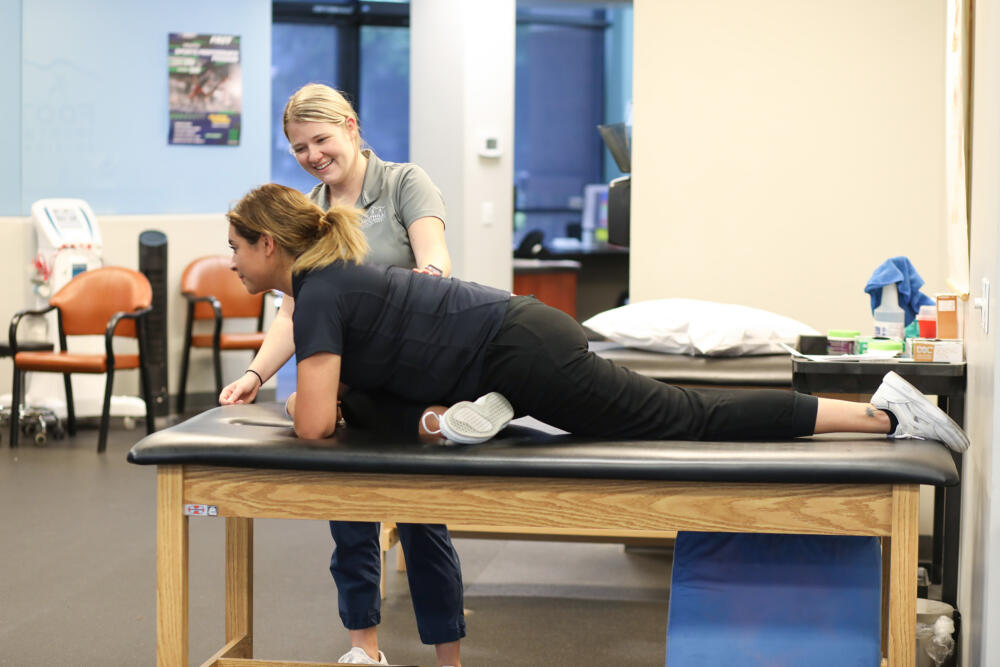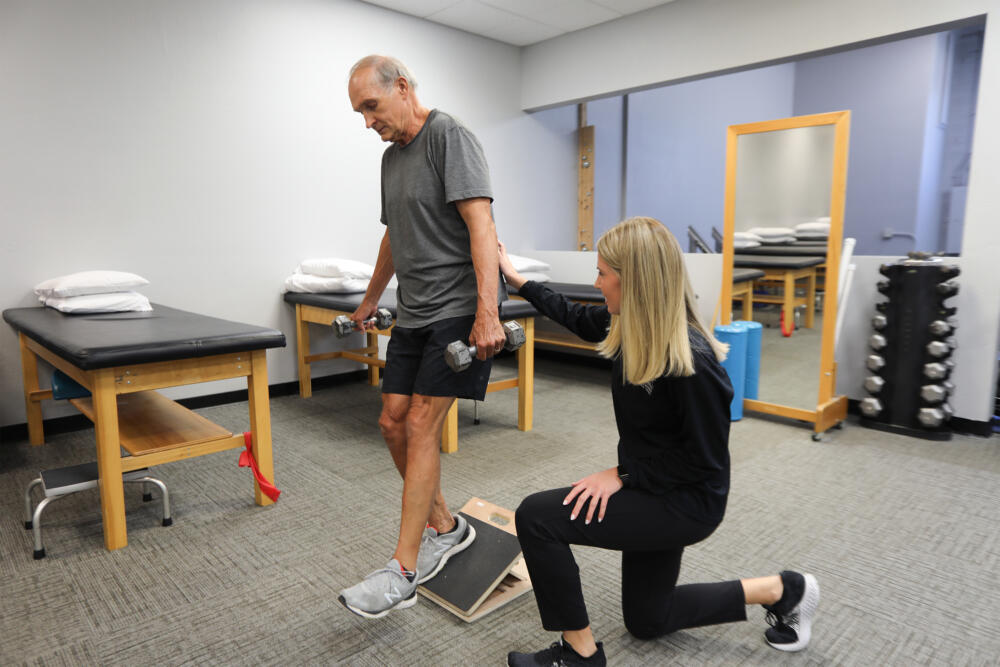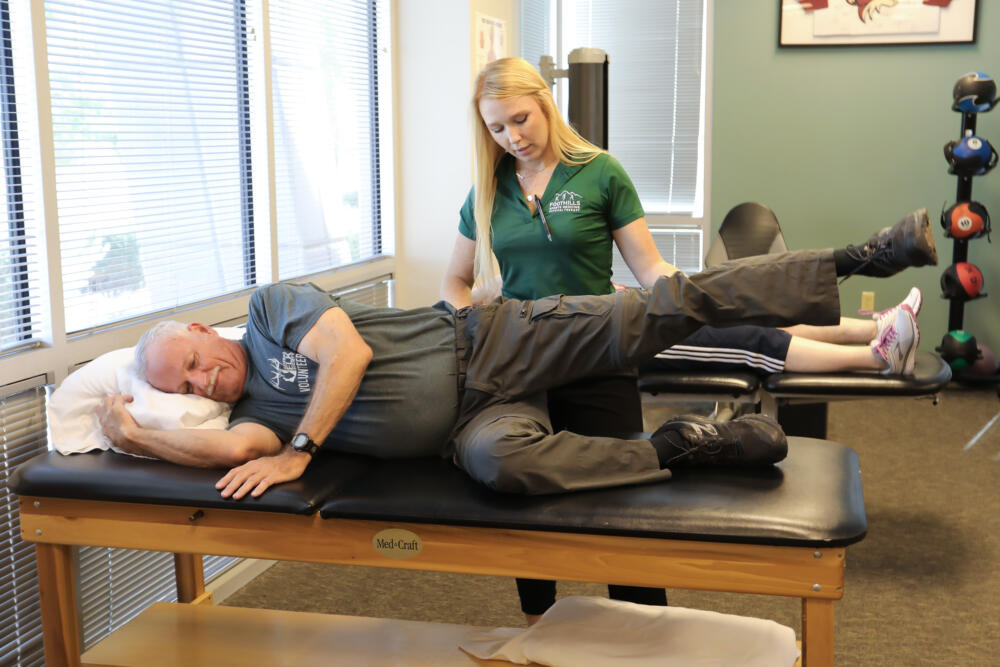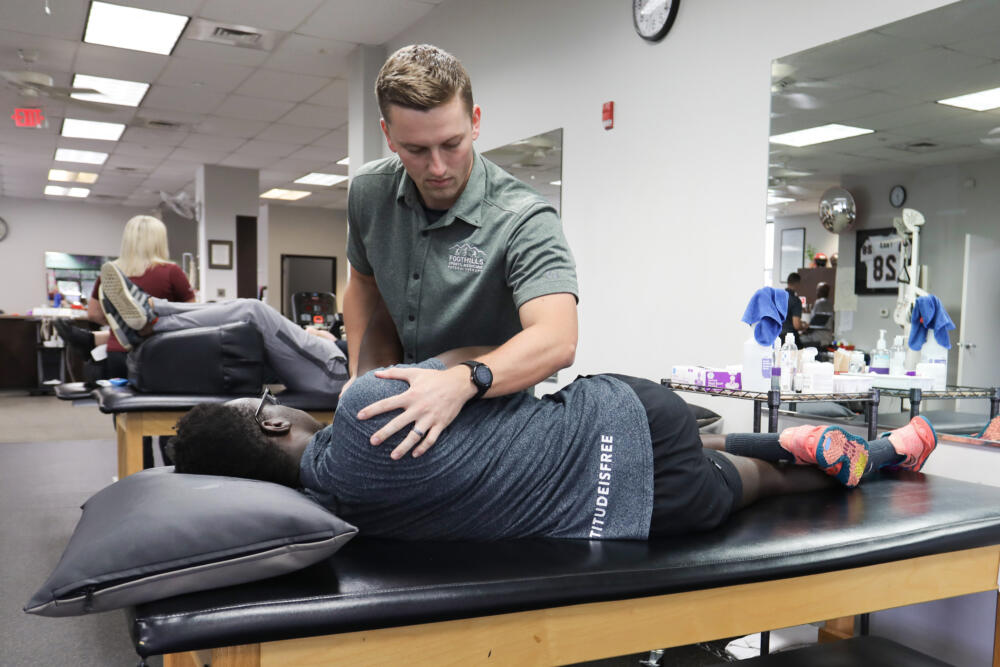Like most people, you may have a vague idea of what physical therapy is and why it is an important part of healthcare. You may not know that no matter what is going on in your life or with your health, physical therapy can most likely help! PT is a type of healthcare practice that focuses on improving the way you move and everything involved in safely getting around throughout your day.
Physical therapy treatment ranges from carefully prescribed exercises to hands-on techniques designed to target your mobility or functional impairment. It can also help with recovery from surgery, injury prevention, and fall prevention, among many other things! A very common preconception is that physical therapy is for athletes or those recovering from orthopedic surgery. While PT is appropriate in both of these scenarios, and Sports Medicine is a specialty that Foothills focuses on, it can also be useful in various other situations.
When physical therapists graduate from their doctorate program, they can treat patients in any setting – they may treat patients suffering from a head injury, or going through chemotherapy for cancer, or babies learning to walk! Visiting a physical therapist, or as we call it, PT FIRST, is a good place to start whenever someone is having trouble moving around.

Types of Physical Therapy
After a physical therapist receives their doctorate, they may specialize in a specific treatment area. No matter your problem, a highly experienced specialist can likely diagnose and treat it.
While most people equate physical therapy with exercise, the variety of treatments and interventions offered by physical therapists are much more diverse than that. Manual physical therapists may be able to relieve your pain with just a few quick motions, while in other cases, your PT may merely make recommendations that change your life for the better.
- Orthopedic physical therapy focuses on bones, muscles, ligaments, and joints. If you have broken a bone, torn a muscle or ligament, or undergone a total joint replacement, orthopedic physical therapy is the right place for you.
- Neurologic physical therapy addresses impairments caused by stroke, traumatic brain injury, multiple sclerosis, Parkinson’s disease, and anything else that affects the brain, spinal cord, and nerves.
- Cardiopulmonary physical therapy is a great option for individuals experiencing congestive heart failure, heart attack, COPD, or any other condition that affects the heart, arteries, veins, or lungs.
- Pelvic floor physical therapy can help with incontinence, prolapse, sexual dysfunction, and pain.
- Pediatric physical therapy helps children with developmental and congenital conditions that affect their growth and acquisition of skills.
Benefits of Physical Therapy
Now that you know the different types of physical therapy, you may still wonder what’s in it for you. There are countless benefits to participating in a physical therapy program. For example, maybe you have recently retired and are looking forward to spending time with your grandkids but are having trouble keeping up with them.
Maybe your back, hips, or knees are painful after long walks or sitting for a long time at little league baseball games. A physical therapist will carefully evaluate the issue, determine a diagnosis, and collaborate with you to set goals that are achievable and relevant to your life.
Your treatment plan will be as unique as you are and will focus on your priorities. Do you want to decrease pain? That’s what we will prioritize. Do you want to increase your endurance so you can walk the dog longer without getting tired? We can do that too!
Rapid recovery from surgery, decreased chance of re-injury, improved balance, strength, and flexibility, and increased participation in social activities are all things you can expect to gain from participating in physical therapy!

Common Conditions Physical Therapy Helps
Physical therapists are movement experts who can help decrease pain and improve motion in many conditions. It doesn’t matter if it is a muscle, joint, heart, lung, or brain problem that is limiting the way you move, we are trained to address limitations in movement across the spectrum.
Some of the most common conditions seen by physical therapists include joint replacements at the shoulder, hip, and knee, low back pain, balance, and walking problems, sports injuries like ACL rupture and repair, and shoulder injuries like rotator cuff tears. It is also common to go to a physical therapist after a car accident to address whiplash or any other injuries sustained in the crash. If you are experiencing a new onset of pain or even something that has been plaguing you for years, many people finally find relief through physical therapy.
If you are looking for a physical therapist that is focused on your full recovery, schedule a free assessment at any of our valley-wide locations. Our Full Recovery Focus™ will help you get your life back because a “good enough” recovery just isn’t good enough. Our clinics are conveniently located across Metro Phoenix with locations in Scottsdale, Tempe, Glendale, Gilbert, and Chandler, where we offer a vast variety of physical therapy treatments.
Give it a try today to discover how physical therapy can help you!





